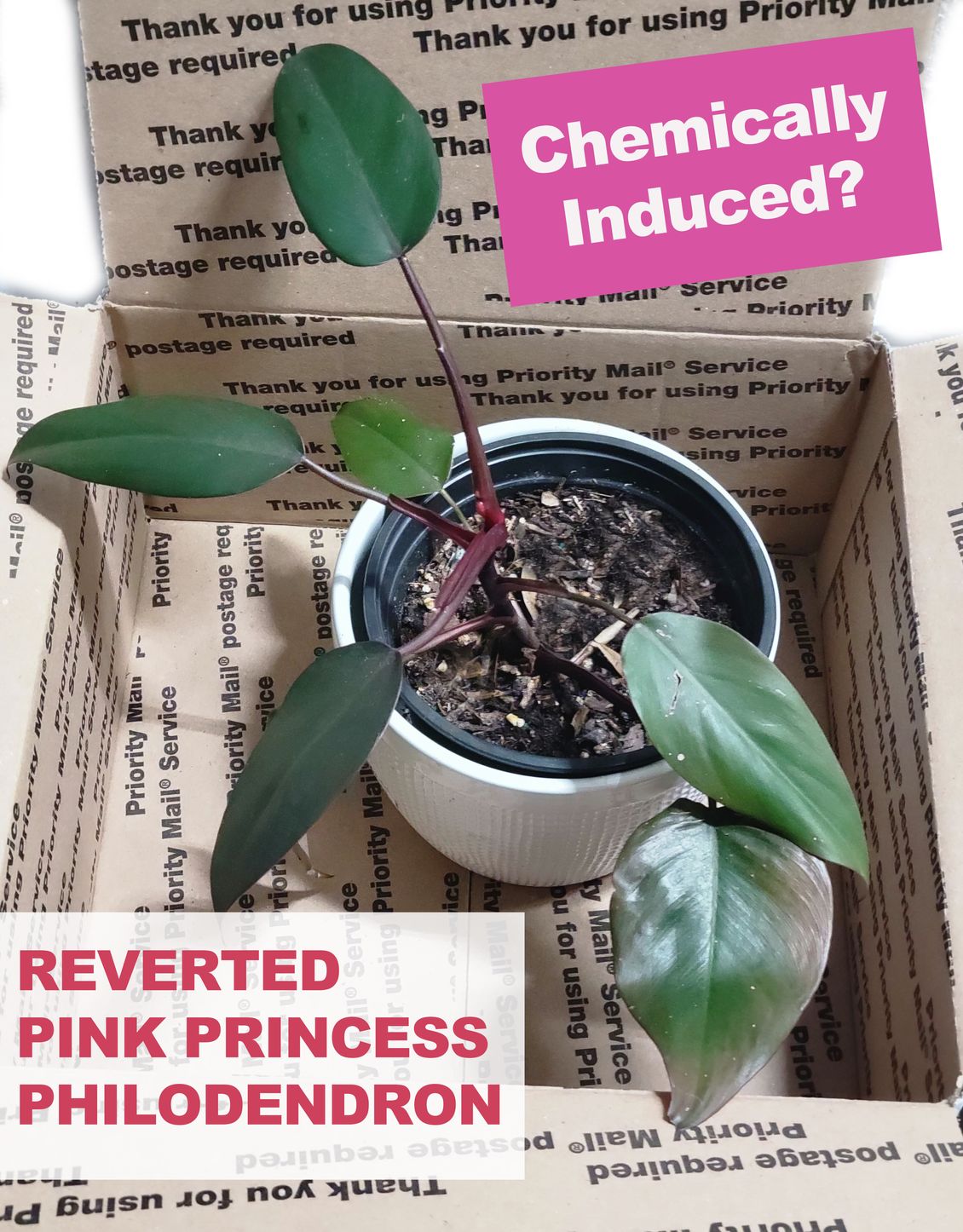Latest News
Why Pink Princess Philodendron is Likely a Chemically Induced Plant

With the rise in popularity of pink foliage plants, consumers should be very cautious before making any new purchases. Big box growers have recently released a massive amount of Pink Princess Philodendron plants (PPP) for sale (both online and in stores). However, something very odd appears to be at play.
Many of the Pink Princess Philodendron plants that are entering the market either have very low variegation (reverting) or they have the same, uniform “all pink” unfolding new leaf (as if they have been chemically altered). What’s even more strange, is that Pink Princess Philodendron plants were originally marketed as “natural” by internet influencers. Those same “plantfluencers” once falsely told buyers that the plant could not revert.
Oddly enough, PPP plants are starting to show the same characteristics that can be seen in many chemically induced houseplants like the Pink Congo Philodendron. Chemically induced pink plants have been modified to show pink “variegated” foliage. Although the leaves are beautiful, the variegation is highly unstable and likely not to continue. Below are several traits that Pink Princess Philodendron carry that resemble those that can be found in chemically induced plants.
1. Solid Pink Unfolding New Leaves (Leaf Chlorosis)
In botany, “leaf chlorosis” is a condition used to describe plants that do not create a sufficient amount of chlorophyll. When green leaf plants experience chlorosis, the leaves may present as white or yellow. However, Pink Princess and Pink Congo Philodendron leaves are a darker “burgundy” color. Chlorosis can present itself as “pink” in these types of houseplants.
2. Not Originally Discovered in the Wild
Pink Princess Philodendron has a sketchy back story. No one knows exactly where they came from, almost as if they were “created” in a lab. It is said to be a hybrid, however there are no patents that verify that this information is actually true. What appears to be more likely is that the plant is a creation of Thailand, Indonesia, and Ecuador tissue culture laborites, as many of the plants are originating from overseas.
3. It Can Easily Revert
Reverting is the process of losing variegation. Both Pink Princess Philodendron and Pink Congo have been reported to revert very easily. Although popular plantfluencers were dishonest and promoted that “there’s no such thing as a reverted Pink Princess”, a quick Google search will show you that PPP can indeed fully revert.
Opportunistic sellers are now backtracking their original claims that PPP could not revert. Many are attempting to rebrand the plant, using names like “Burgundy Princess”. These sellers also encourage “light stressing” or pruning to try to induce more variegation when plants start to lose their pizzaz. While on occasion those techniques may work for some, they do not work for everyone. This often leaves many buyers disappointed, as Pink Princess Philodendron was originally hailed above Pink Congo. It now appears that both plants have the same things in common.
4. Pink Princess Philodendron is Prone to Leaf Deformities
While it is true that philodendron may show leaf deformities if the humidity levels are not high enough, Pink Princess appears to be even more sensitive than most plants. It can often produce “warped”, “stunted”, and other unsightly leaves. Leaf deformities like the ones seen in PPP aren’t usually due to humidity alone. Malformed leaves are commonly seen in plants that have experienced chemical damage.
5. “Fading” Leaf Colors
The leaf colors on PPP can easily fade or “dissipate” over time, giving it a “washed out” or gradient look. This same pattern of leaf fading is often seen in Pink Congo plants when they begin to revert. Chemicals are a leading factor in foliage discoloration and instability.
6. Multiple Growth Points Activated Simultaneously
Being “chemically induced” is not just about having a “pink” color. Chemicals like hormones can affect the way a plant grows. It is extremely common to see Pink Princess Philodendron plants with “hyper” growth points (multiple plants growing from the same stalk). While sometimes multiple growth points may be activated if a plant is cut and propagated, many of the plants that are on the market now are not cuttings and have no marks showing that they were ever cut. This sign of hormone use is often found in tissue culture labs where chemicals are used for multiplication (to produce rapid growth).
Both Pink Princess Philodendron and Pink Congo have shown strikingly similar traits. The conclusion is that most likely, both plants are chemically induced to some compacity. Buyers should exercise extreme caution when considering either plant. Although both plants are stunning, the variegation will most likely not continue forever.
Umar Nisar was born and raised in the busy city of Abbottabad. As a journalist, Umar Nisar has contributed to many online publications including PAK Today and the Huffing Post. In regards to academics, Umar Nisar earned a degree in business from the Abbottabad UST, Havelian. Umar Nisar follows the money and covers all aspects of emerging tech here at The Hear Up.
Thanks










